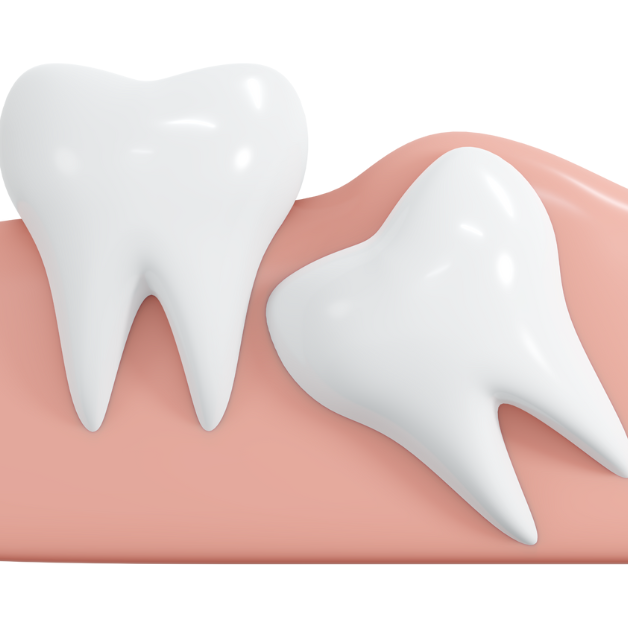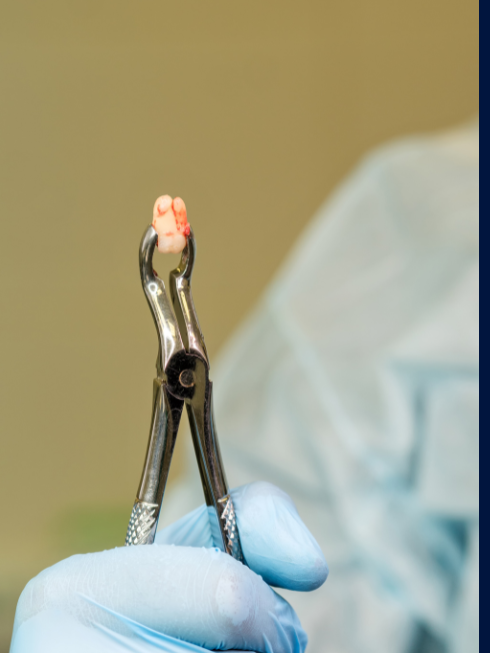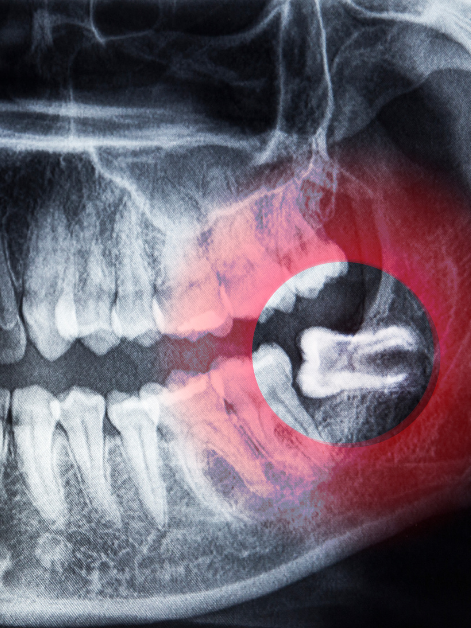Wisdom Teeth Removal
Wisdom teeth, also known as the third molars located at the back of the mouth, may not require extraction if they meet the following criteria:
- They are healthy.
- They have fully grown in.
- They are positioned correctly and biting properly.
- They can be cleaned daily.
However, wisdom teeth often do not have enough space to grow properly, leading to possible issues. They may develop at varying angles within the jaw, occasionally even horizontally.

When should wisdom teeth be removed?
- The extraction of wisdom teeth is typically performed during early adulthood, commonly between the ages of 15 and 22. This age range is considered optimal for the procedure given that it offers a safer, less complex, and speedier recovery process as opposed to removal at a later stage of life. This advantage is primarily attributed to the teeth having incompletely developed roots, a less dense jawbone, and a generally hastened post-surgical healing period.
- It is a common practice for young adults to undergo wisdom teeth extraction as a preventive measure to proactively address potential dental complications. According to the recommendations set forth by the American Dental Association, the extraction of wisdom teeth may become necessary if individuals exhibit any of the following conditions or symptoms:
- Discomfort or pain in the vicinity of the wisdom teeth.
- Presence of gum disease.
- Persistent infections in the soft tissue behind the last lower tooth.
- Identification of cysts, which are sacs filled with fluid.
- Observation of tumors.
- Damage experienced by adjacent teeth.
- Severe dental decay.
What does it mean when a tooth is impacted?
Definition and Classification of Wisdom Teeth Impaction:
- Impaction is a dental condition characterized by the failure of a tooth to fully emerge from the gums. This commonly affects wisdom teeth, with impaction occurring at different levels.
- Hard tissue (bony) impaction specifically refers to a scenario where the tooth remains embedded within the bone, which can manifest as partial or complete impaction. On the other hand, soft tissue impaction involves the tooth's top being positioned above the bone and covered only by gum tissue.
- Furthermore, wisdom teeth can exhibit varied growth patterns, including vertical, horizontal, or angled growth. The angle of growth can either be directed away from neighboring teeth or toward adjacent teeth.
What occurs during the extraction of wisdom teeth?
For the evaluation of your wisdom teeth, we will conduct x-ray imaging of your oral cavity. Many patients choose to undergo the extraction of all four wisdom teeth in a single procedure.
Local anesthesia will be administered to numb the extraction site, allowing you to remain conscious throughout the procedure.
Should you require it, we can provide sedation anesthesia in the form of nitrous oxide, also known as "laughing gas", which serves as a mild sedative agent to effectively manage pain and anxiety during dental procedures.
An experienced dentist will perform an incision in the gum tissue to extract the tooth, occasionally necessitating the removal of bone tissue that may impede the process. The tooth may be extracted whole or divided into smaller sections for ease of removal.
Upon completion, the wound will be sutured to promote healing.
How to recover from wisdom teeth extraction
To increase the odds of a successful recovery, adhere to the following recommendations:
- Frequently replace the gauze pad covering the wound.
- Apply an ice pack to minimize swelling.
- Refrain from consuming alcohol, smoking, and engaging in physical activity.
- Gently rinse with warm salt water to help neutralize bacteria.
- Avoid using a straw
- Maintain regular brushing and flossing habits to prevent the accumulation of food particles and harmful bacteria in your mouth. Be cautious not to brush the wound


